Garfield “Use Your Friends Wisely” McDonald’s mug: 103,600 ppm Lead (causes brain damage) + 7,314 ppm Cadmium (causes cancer)
 Continue reading below the images of additional cups/mugs/glassware we have tested. Each image below is a direct link to a separate post about that item containing its XRF test results. This post (about the Garfield mug) is a good overview to help provide context for all of these additional examples.
Continue reading below the images of additional cups/mugs/glassware we have tested. Each image below is a direct link to a separate post about that item containing its XRF test results. This post (about the Garfield mug) is a good overview to help provide context for all of these additional examples.
The annoying ads you see on this article help us cover the cost of the work we do here. We apologize for the inconvenience. Thank you for your patience. To make up for this, many of our articles are ad-free.
 •
•  •
• 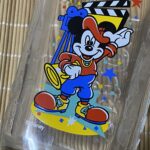 •
• 
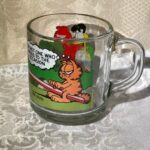

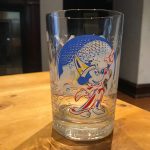





















For those new to this website:
Tamara Rubin is a multiple-Federal-award-winning independent advocate for childhood Lead-poisoning prevention and consumer goods safety, and a documentary filmmaker. She is also a mother of Lead-poisoned children (two of her sons were acutely Lead-poisoned in 2005). Since 2009, Tamara has been using XRF technology (a scientific method used by the U.S. Consumer Product Safety Commission) to test consumer goods for toxicants (specifically heavy metals — including Lead, Cadmium, Mercury, Antimony, and Arsenic). All test results reported on this website are science-based, accurate, and replicable. Items are tested multiple times to confirm the test results for each component tested. Tamara’s work was featured in Consumer Reports Magazine in February of 2023 (March 2023 print edition).
Published: July 19, 2022 – Tuesday
Garfield McDonald’s Collector Glass marked “1978” on the side
(Same text as other Garfield Glass post, but with XRF readings for the glass pictured)
How much Lead is “too much” Lead? How much Cadmium is “too much?”
In currently manufactured items marketed and sold as “items intended for use by children,” 90 ppm Lead or greater is considered illegal in the paint, glaze, or coating; 100 ppm Lead or greater is considered illegal in the base substrate. This law (the Consumer Product Safety Improvement Act/ CPSIA) went into effect in 2008 and was not fully enforceable until 2012 (as compliance related to certain types of products was phased in over time). As a result, products made before 2008 could legally be painted with unsafe levels of Lead (and other toxic elements/heavy metals) in the paint.
In addition to testing positive for an extremely high level of Lead in the paint, this “1978” (the year marked on the glass, not necessarily the year manufactured – these were made in the 1980s) McDonald’s Garfield coffee mug also tested positive for high levels of Cadmium (Cd) in the paint. Cadmium is a known carcinogen that does not belong in our dishes or anywhere else in our kitchen.
- There is currently still no Federal regulatory limit or standard for total XRF-detectable Cadmium in dishware in the United States.
- Cadmium is considered illegal in consumer goods in the country of Denmark at levels of 75 ppm or higher; in the U.S., the State of Washington has a consumer goods Cadmium limit of 40 ppm.
- To read more about the concerns for Cadmium in consumer goods, click here.
Below is one full set of the exact XRF readings for this Garfield-themed glass McDonald’s mug:
All colors of the paint on the glass were tested. This is the reading set for a 60-second XRF test on an area of paint with multiple colors – red, orange, yellow, white, and black (near Garfield’s eyes). The XRF test results reported on this website are science-based and replicable. All testing reported here on the website is for tests repeated multiple times, to confirm the results. To learn more about the testing methodology and instrumentation used for test results of consumer goods reported on this website, click here.
60-second reading
(with scope across multiple colors of paint)
- Lead (Pb): 103,600 +/- 3,300 ppm
- Cadmium (Cd): 7,314 +/- 391 ppm
- Tin (Sn): non-detect
- Mercury (Hg): non-detect
- Arsenic (As): non-detect
- Selenium (Se): 705 +/- 73 ppm
- Barium (Ba): 274 +/- 89 ppm
- Chromium (Cr): 1,158 +/- 365 ppm
- Antimony (Sb): 83 +/- 52 ppm
- Nickel (Ni): 225 +/- 95 ppm
- Copper (Cu): 268 +/- 53 ppm
- Zinc (Zn): 1,553 +/- 93 ppm
- Titanium (Ti): 16,200 +/- 1,700 ppm
- Iron (Fe): 449 +/- 162 ppm
- No other metals were detected in consumer goods mode.
“But it is only on the outside of the glass, right? Is this really a problem?”
Some people might say, “Well — it’s only on the outside of the glass — you are not drinking Lead,” or “The Lead doesn’t touch the contents of the glass,” or “I’m not licking the outside of the glass!” (Yeah, that is a popular, actual comment).
The fact of the matter is that all Federal agencies agree: it only takes — literally — a microscopic amount of Lead to poison a human (or pet) and that all forms of Lead have the potential to cause harmful impacts on biological structures (there is no “safe” form of Lead or safe use of Lead in the home).
If you have any of these types of glasses (vintage glasses with painted characters or designs) in your home, you are likely familiar with the fact that the paint wears over time with use, as is clearly evident when colors fade and parts of images disappear. The concern is therefore about “where do those micro-particles of Lead go as the decorative elements of the glass wear with use and washing?” The answer is fairly obvious: into your kitchen, your sink, your dishwasher, your cabinets — and even potentially onto your hands or into the food you prepare in your kitchen. Here’s an article that discusses the “only on the outside” argument in more detail.
- This article discusses (in more detail) how much Lead it takes to poison a human.
- This link has more examples of similar glasses we have tested and reported on here on the Lead Safe Mama website.
- While this issue has not been widely studied (specifically in terms of the greater long-term implications of Lead, Cadmium, and other toxicants found in the exterior decorative painted elements on functional glassware or dishes), it has been studied to some degree. You can read about one such study (from 2017, England) here, at this link.
- Another comprehensive article was written on Cracked.com earlier this year — here is the link.
What are the potential pathways for Lead exposure from an item like this?
The main pathways for Lead exposure (from all sources) are ingestion and inhalation. With a cup/mug like this, the primary concern is exposure to microparticulate Lead directly (through using the cup when drinking beverages), or indirectly, in which the Lead wearing off the surface of these cups may be added to your kitchen environment with time and use.
- You can ingest (microscopic) bits of Lead while drinking from the glass (especially if your mouth touches the painted pattern as you drink).
- It is also possible that microparticulate from the high Lead paint can wear off onto your hands as you touch the glass (and then you might do something like eat a chip or an apple without washing your hands first, resulting in another potential ingestion pathway).
- In testing I have done when there is high Lead paint on the outside of the glassware, the inside and outside of the glass (on unpainted areas) also often test positive for trace (low) levels of Lead (likely the worn paint found across the glass). So there is potential for microparticulate lead from the wearing paint to be on the inside of the glass (even though it is not visible). This is another potential ingestion pathway.
- Finally (and less likely to cause a quantifiable exposure risk) — the bits that wear off from washing (abrasion and detergents) and friction (bumping against other dishes in your cabinet, especially if you stack them in a way that might contribute to the paint wearing) can also contribute to microparticulate Lead being added to your kitchen environment.
“Have I been poisoned from using this mug (or one like it)?”
There are, in fact, case studies in which adults have been chronically Lead-poisoned from habitual (daily) use of a high-Lead-content coffee mug. That said, given the Lead is “only” on the outside of these mugs, while it is demonstrably not impossible for a mug like this to cause chronic (acute) Lead-poisoning if used daily, it is more likely the impact of using a vintage painted glass mug like this would be possibly generating persistent low-level chronic Lead exposure that may not show up in a routine Blood Lead Level (BLL) test. This is because the low threshold of detection for BLL tests is normally 2.0 or 3.0 micrograms of Lead-per-deciliter of blood — even though negative health impacts like fertility issues and negative birth outcomes/complications have been scientifically demonstrated to occur at much lower blood Lead levels such as BLL 0.43.
The overarching concern, when discussing the issue of Lead found in so many consumer goods in daily use in our homes, is more the concern for a persistent, chronic background level of exposure (aggregate exposure from multiple sources combined) that may likely go undetected for years, yet still significantly contribute to persistent health issues that have been linked to low-level Lead exposure. This could look like headaches, arthritis, a compromised immune system, kidney issues, heart complications, ADHD, impulse control issues, memory impairments, infertility/erectile dysfunction, and more. As a result — especially if you are symptomatic at all, OR if you are planning on becoming pregnant any time soon — it is always a good idea to get a Blood Lead Level test if you have not had one recently. If you let your doctor know you have had a recent potential exposure to Lead, testing should be covered by your insurance in most cases. This article discusses BLL testing in detail.
Here are a few articles that discuss this in more depth:
- Symptoms of Lead Exposure in Adults
- Will this item poison me?
- Is the testing methodology used on this website relevant for determining potential human exposure risk?
- Is this work fear-mongering? Or is there a real concern identified with XRF testing?
- What’s the risk with Lead in dishes (in general)?
- The link between low-level exposure and birth complication and fertility issues in women of childbearing age.
“What should I do with these glasses?”
My first thought is that Lead-painted glassware like this should be destroyed — because even if YOU set yours aside as a collectible now, that does not prevent some child from eventually possibly using it as a drinking glass at some point in the future (10, 20, or 30 years from now, for example). While (as a mother of acutely Lead-poisoned children) I would never keep items like this in my home, if you MUST keep them (for some sentimental reason), please consider at least keeping items like these in a locked curio-cabinet behind glass. Please do NOT let any children in your life handle or use them.
Some folks have suggested keeping these as a “pencil cup” (or for a similar non-food use purpose). Whatever you choose to do with your cups, I strongly recommend retiring vintage, painted mugs and glassware like these from your rotation of mugs used for drinking beverages. The risk is too great — especially considering that inexpensive Lead-free alternatives are readily available (here’s a link with some Lead-free mug options, many of which can also be found at Walmart, Target, or the Dollar Store).
Some additional links that may be of interest:
- If you are interested in participating in the consumer goods testing we report on here at this website, click to learn more about how it works.
- Even though these glasses are incredibly toxic, as a consumer you are allowed to throw them in the household trash. This article discusses disposal considerations in more detail.
As always, Thank You for reading and for sharing Lead Safe Mama articles! Please let me know if you have any questions — I will do my best to answer them personally, as soon as I have a moment (although it may take a while as I am often busy with kids underfoot, or helping families with Lead-poisoned children across the country).
Tamara Rubin
#LeadSafeMama
Owner — Lead Safe Mama, LLC
An Oregon-based, woman-owned small business.
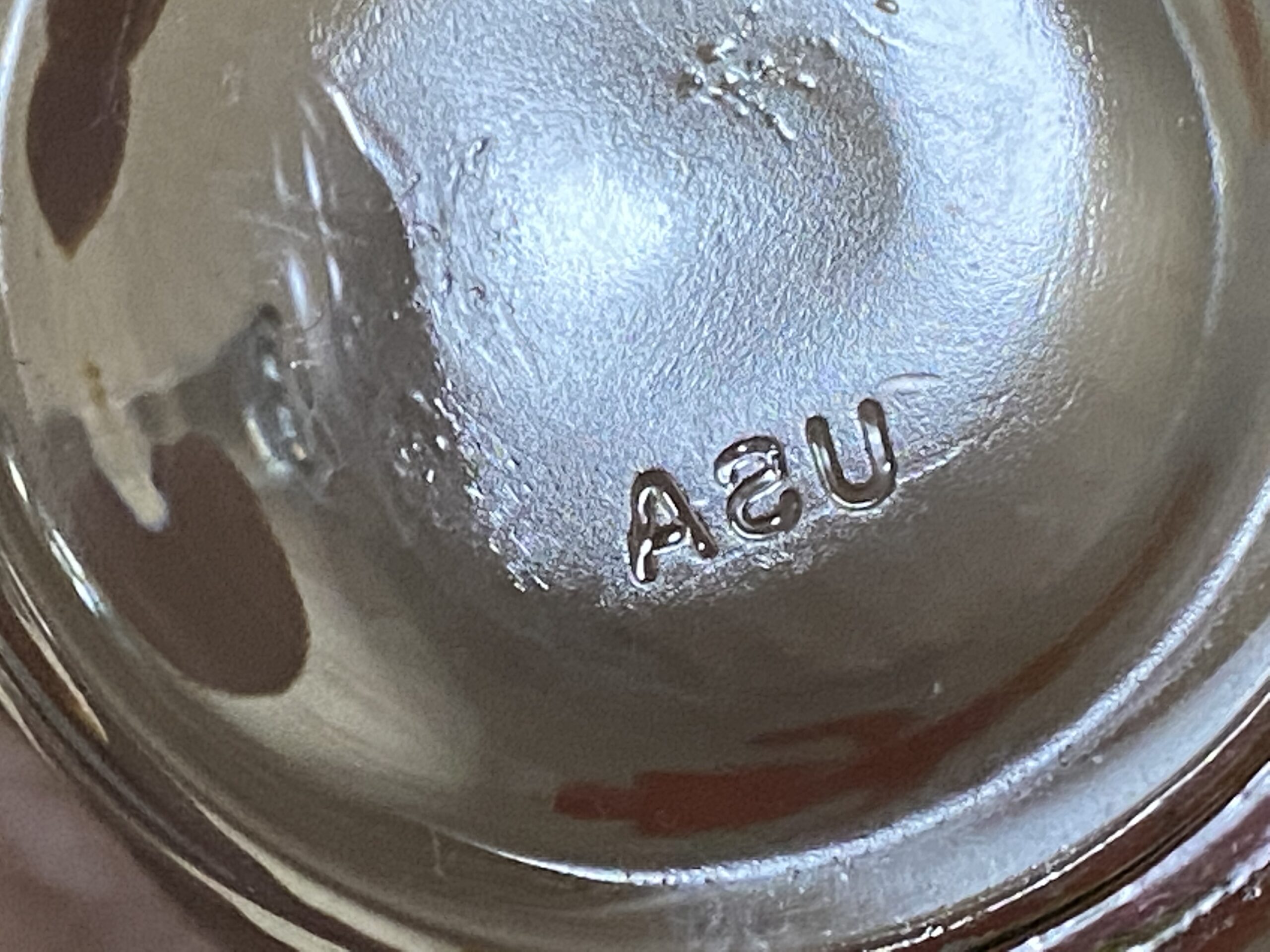
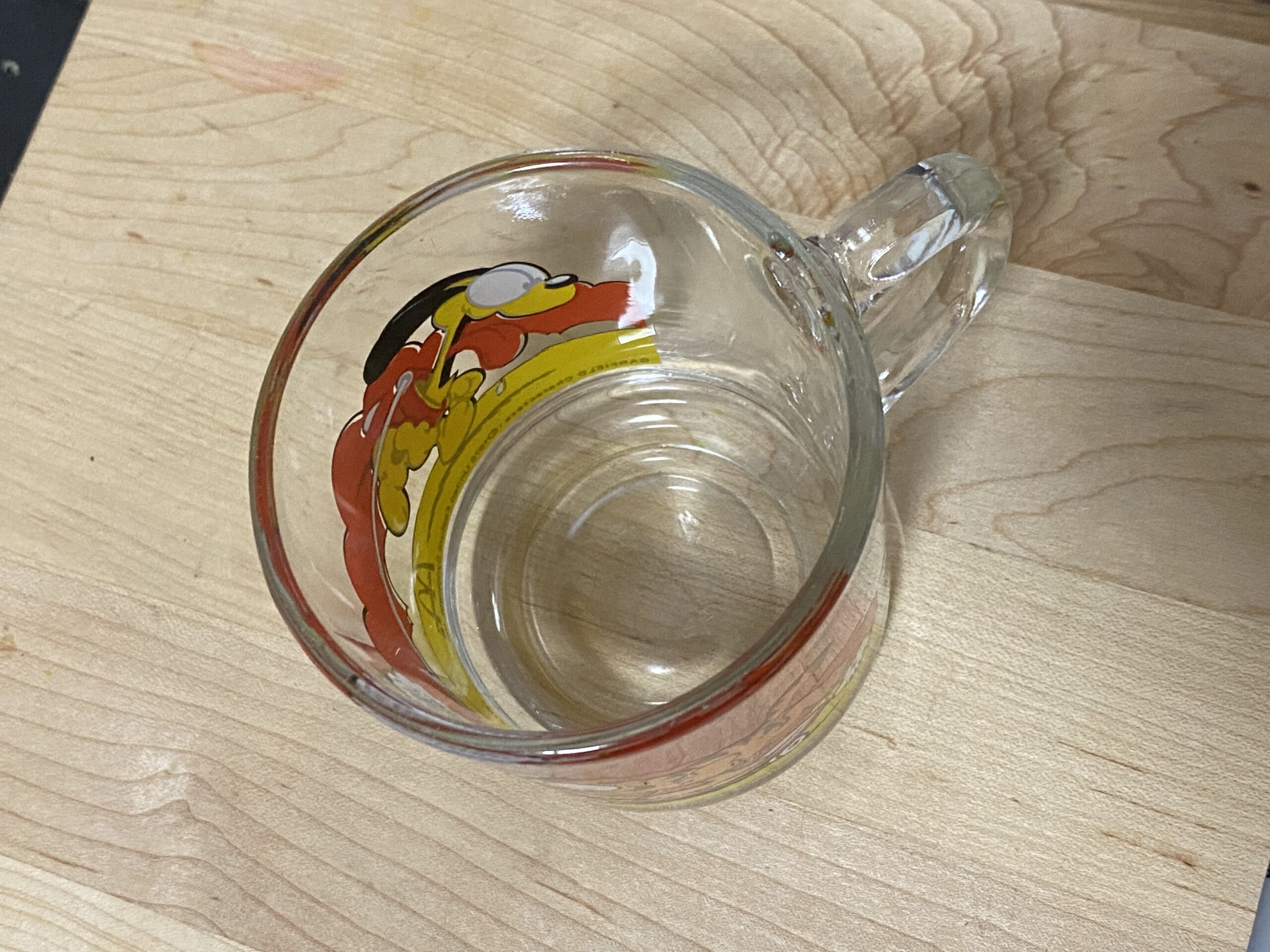
Never Miss an Important Article Again!
Join our Email List











hello where may I acquire such fine China? I would love to drink from such a fine liquid vessel as this one. Perhaps even eat garfield’s favorite food methinks mmm yum
I hate mondays
i have this and i dont have cancer yet
update: nevermind
Perfect comment. Thank you! Lol.
Would these be a danger to anyone if they were kept high on a shelf and minimally handled?
If they are not kept behind glass (in a sealed cabinet), over time the paint on the exterior can create microdust as they age / deteriorate. The microdust contributes to Lead contamination of your general house dust. There is also the concern that someone might use them after you are gone (which is why I encourage destroying them – especially as they are likely to be used by children in the future).
If they test positive with this kit – they are likely contributing microdust: https://amzn.to/4eUwXcd
T